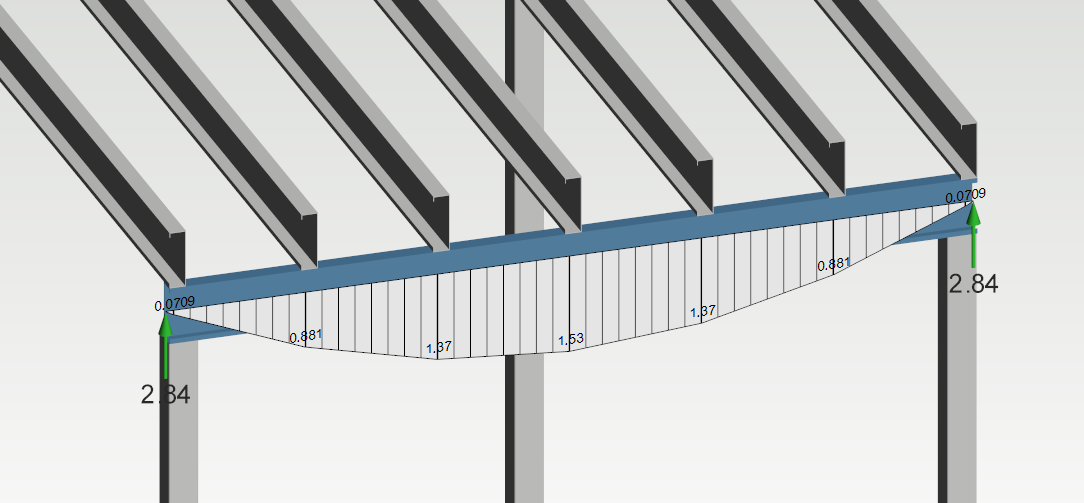Transverse Load Check
General
Transverse loads are checked against point loads and supports in member's capacity check. Doubled beams can be modeled into the FEA model in many different ways, but there is only one correct way to do this because of the limitations of the capacity check.
Capacity of the doubled beams cannot be checked correctly against transverse loads if node links have been used between floor joist and beams, although the FEA model is solved correctly. The correct way to model doubled beams is to check the support reactions of the floor joist and add equivalent loads to the doubled beams. If there are two identical beams against each other, support reaction loads needs to be divided equally for both beams.


Support Reactions
A FEA study is used to define support reactions of the beam in the structure.The floor is designed for 2.0 kN/m2 load. This is simplified example so load is not divided for live and dead loads. Beam spacing is 400 mm when a line load for each beam is 2.0 kN/m2 * 0,4 m = 0,8 kN/m. There is only one beam member in this study and it is loaded with 0.8 kN/m line load.

Add supports and solve the study to check support reactions. The support reaction is 1.61 kN in both ends and the bending moment diagram looks correct.


Solve Stresses of Doubled Beams
A new study is created for the doubled beams. Nodes are created for each floor joist and the support load is divided equally for both beams 1.61 kN / 2 = 0.81 kN.


Now the capacity check can be performed and all transverse loads are checked correctly.

Capacity Check
Check the capacity of the structure by creating load patterns, setting buckling lengths for the members and running the capacity check.
